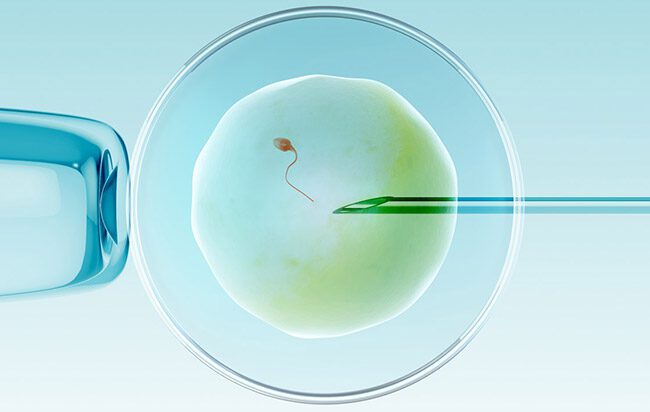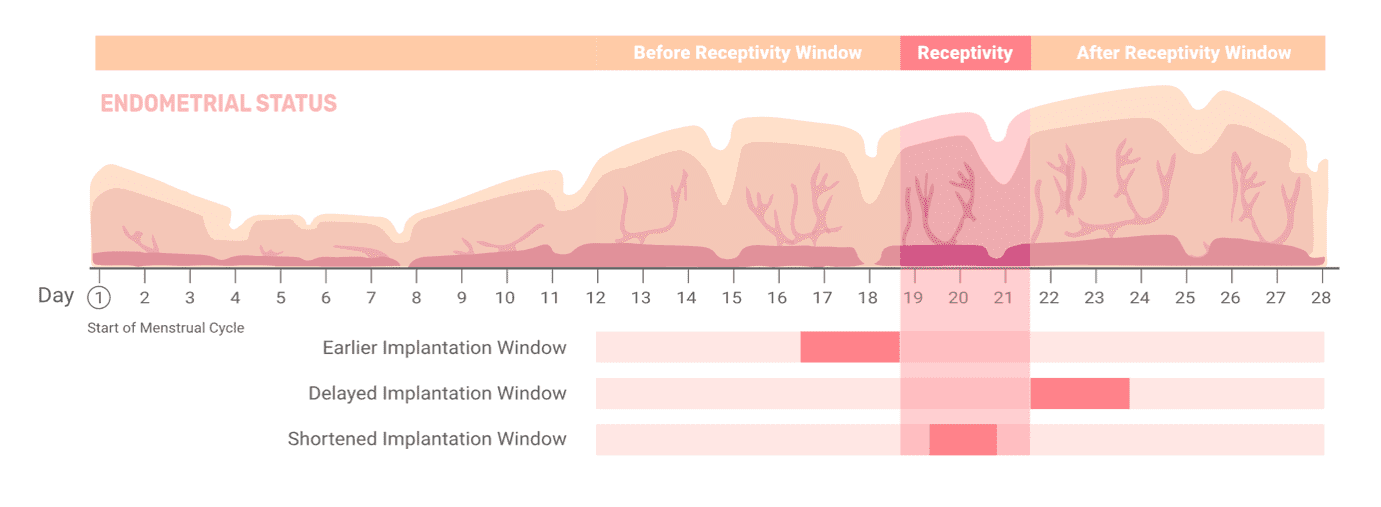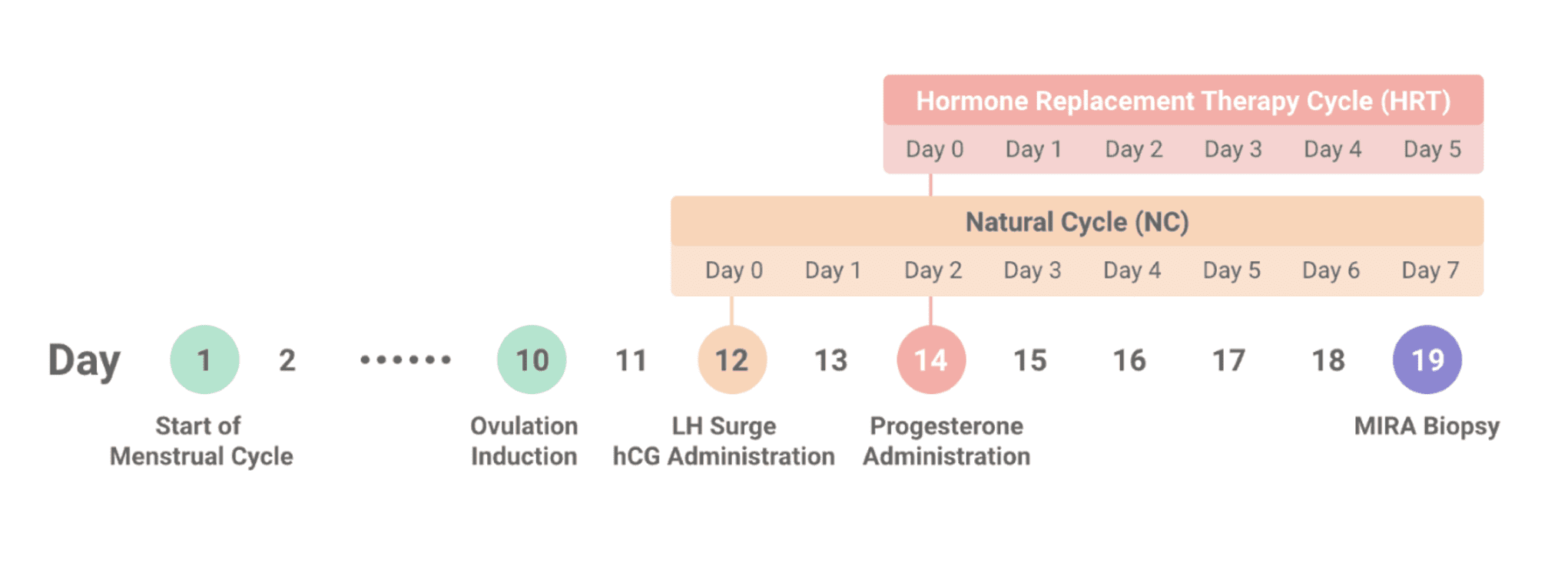MIRA™ is a miRNA-based receptivity test that helps you determine your patients’ window of implantation (WOI) for optimized embryo transfer. It does this by assessing 100 miRNA biomarkers that target more than 600 endometrial receptivity-related genes to identify the status of your patients’ endometrial receptivity, which can increase the chances of successful IVF treatment.
A miRNA-based endometrial receptivity test for identifying each patient’s optimal WOI

What is MIRA™?
How does MIRA™ help?
Accurately identifying your patients’ window of implantation is an important factor in successful IVF cycles. By analyzing the endometrial tissue through genetic testing, MIRA™ provides you and your patients with detailed information on the optimal time for embryo implantation.
Every patient has a unique WOI
Large scale studies have shown that 30% of patients seeking fertility treatment have a displaced window of implantation. MIRA™ allows you to determine the ideal time for embryo transfer, and then tailor the IVF protocol to each of your patients.

BENEFITS OF MIRA™
MIRA™ uses a less invasive biopsy procedure and reduces the margin of error through the utilization of microRNA (miRNA), a more stable and tolerant genetic material than messenger RNA (mRNA). This unique endometrial receptivity analysis test delivers fast and reliable results using novel miRNA biomarkers to increase the IVF pregnancy rate to 70% among patients who have a history of implantation failure.

Reliable
MIRA™ provides actionable results in over 99% of first biopsies, so patients and healthcare providers can be confident that they’re getting the information they need in a timely manner.

Sensitive
MIRA™ can process smaller quantities and lower-quality tissue samples, meaning a less uncomfortable biopsy procedure for patients.

Comprehensive
MIRA™’s 100 miRNA biomarkers target over 600 endometrial receptivity-related genes to accurately identify the optimal time for embryo transfer.

Who should I recommend this test to?
If any of the following situations apply to your patients, MIRA™ may be able to help:
- A history of implantation failure or miscarriage
- Few remaining high-quality embryos
- A thinner endometrium
- Age 35 or older*
*While all ages have the possibility of having a displaced window of implantation, recent data has shown that this is an increased possibility for patients 35 or older.
What can MIRA™ tell me?

PRE-RECEPTIVE
Adjust implantation time
A pre-receptive test result means that the patient’s endometrial lining was not yet at peak receptivity at the time of biopsy, and their WOI is delayed. You will schedule their embryo transfer accordingly.

RECEPTIVE
Best time to Implant
A receptive test result means your endometrial lining was at peak receptivity at the time of biopsy. You will schedule their embryo transfer as normal.

POST-RECEPTIVE
Adjust implantation time
A post-receptive test result means that the patient’s endometrial lining was past peak receptivity at the time of biopsy, and their WOI is earlier than average. You will schedule their embryo transfer accordingly. In the case of a post-receptive result, we recommend testing a second time to account for the additional possibility of a shortened WOI.
When should I perform the MIRA™ biopsy during an IVF treatment cycle?
MIRA™ is compatible with both natural cycles and hormone replacement therapy cycles. The following chart indicates the ideal time to perform the MIRA™ biopsy:

